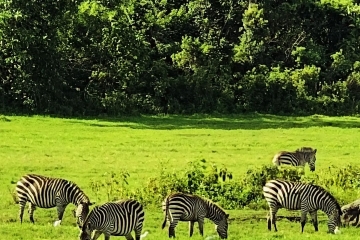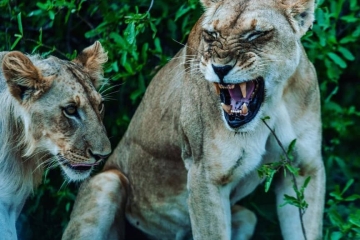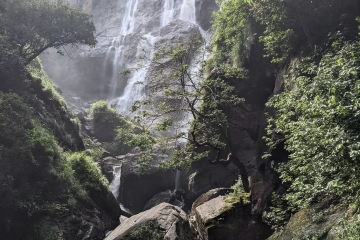Covering an area of 1990 sq km, Udzungwa National Park harbours one of East Africa’s great forests. The biodiversity of the park contribute the most significant attractions for visitors. The diverse habitat includes tropical rainforests, mountain forests, Miombo woodlands, grasslands and steppe. The major drawcard includes its biologically diverse forest, harbouring some plant species found nowhere else in the world, from a tiny African violet to 30-metre high trees.
The spectacular mountains scenery, grasslands, rocks, rivers and waterfalls and unique collection of flora and fauna are the treasure-trove of Udzungwa National Park.
The wildlife spotted in the park includes elephants, leopards, bush bucks, duikers, palm civets, Miombo genets, elephant shrews and hyenas. In addition to the wild animals the park also harbours some species of primates. Among the primates Iringa red colobus and the Sanje crested Mangabey are the unique ones.
With more than 400 species of birds, the park is also a treat for bird-lovers. Some common birds include crowned eagles, ruppells vultures, woodland kingfishers, silvery cheeked hornbills marabous, malachite kingfishers, and trumpeter hornbills.
Your trips can be tailor-made according to your travel preferences, what you want to see, and the time of year, so don’t hesitate to let your operator know exactly what you want in your Tanzania Safari.
Wildlife Highlights
The wildlife spotted in the park includes elephants, leopards, bush bucks, duikers, palm civets, Miombo genets, elephant shrews and hyenas. In addition to the wild animals the park also harbours some species of primates. Among the primates Iringa red colobus and the Sanje crested Mangabey are the unique ones.
With more than 400 species of birds, the park is also a treat for bird-lovers. Some common birds include crowned eagles, ruppells vultures, woodland kingfishers, silvery cheeked hornbills marabous, malachite kingfishers, and trumpeter hornbills.
Explore the Southern Circuit when you crave a more remote and expansive safari experience. The parks in the South are vast, teeming with wildlife, and devoid of bustling crowds. The Southern Circuit is also a haven for witnessing some of the last wild dogs in larger numbers and families of black rhino. The extensive parks in this region mean plenty of travel, exposing you to diverse flora and fauna while enjoying a more intimate safari experience with fewer vehicles, creating a distinct ambiance.
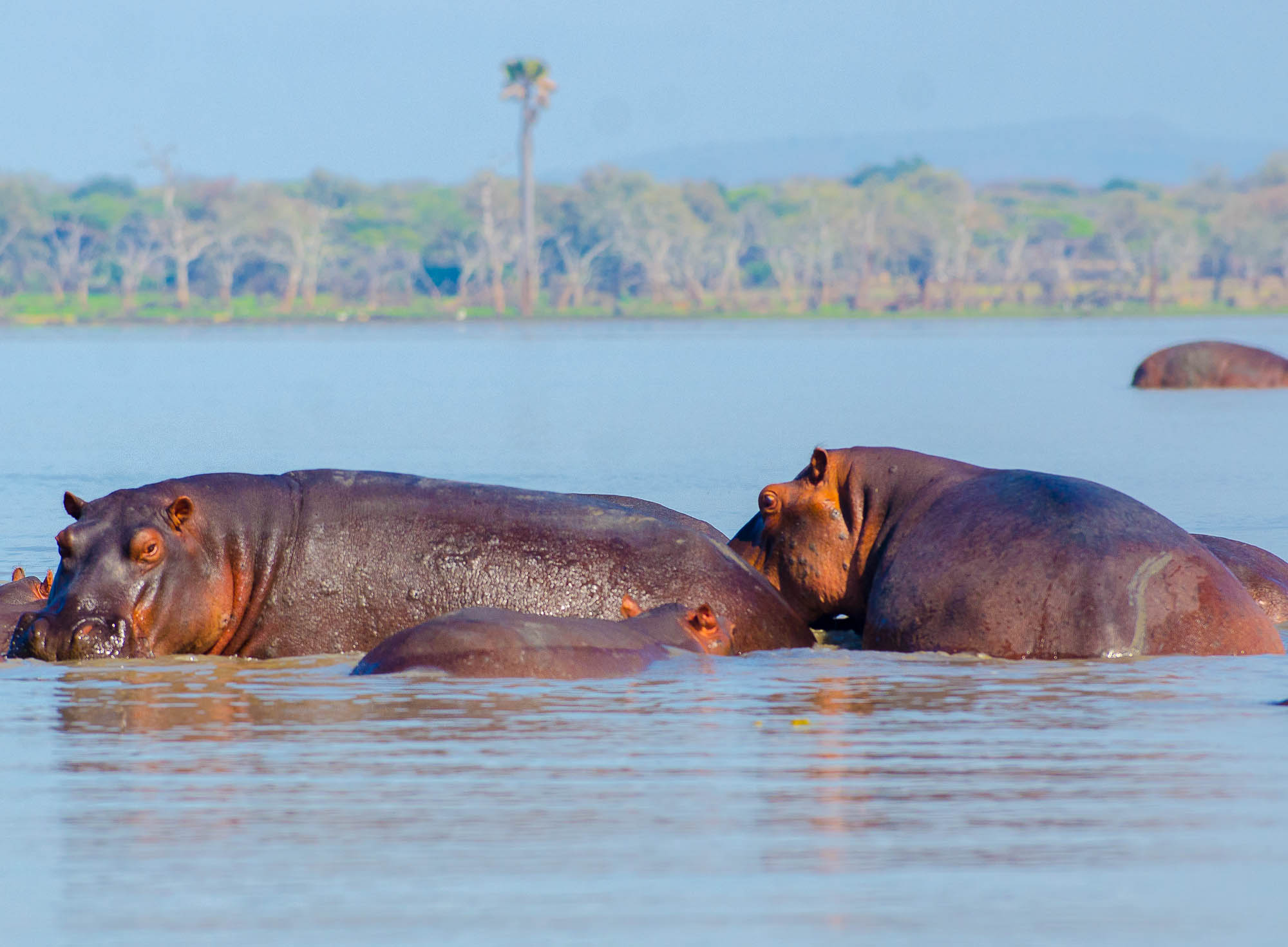
Parks: The parks of the Southern Circuit provide a unique blend of landscapes and wildlife. First, venture into the expansive Selous Game Reserve (Nyerere), one of the largest globally, nestled alongside the Udzungwa Mountains. From waterfalls and cliffs to the meandering Rufiji river, Selous is a haven for diverse wildlife, including wild dogs, black rhinos, and herds of majestic elephants. Experience a distinctive twist with boat safaris, allowing you to view game while peacefully navigating the water.
Ruaha National Park too is a mosaic of varied terrain featuring marshes, tropical forests, and iconic baobabs. This diverse landscape is home to waterbucks, impalas, jackals, and the big cats, promising wildlife encounters in every corner.
Lastly, Mikumi National Park, situated along the Selous and bordered by the Udzungwa and Uluguru Mountains, boasts woodlands, swamps, open grass plains, and iconic baobabs and acacias. Encounter a rich variety of animals here, including lions, hippos, wild dogs, wildebeests, and sable antelopes.
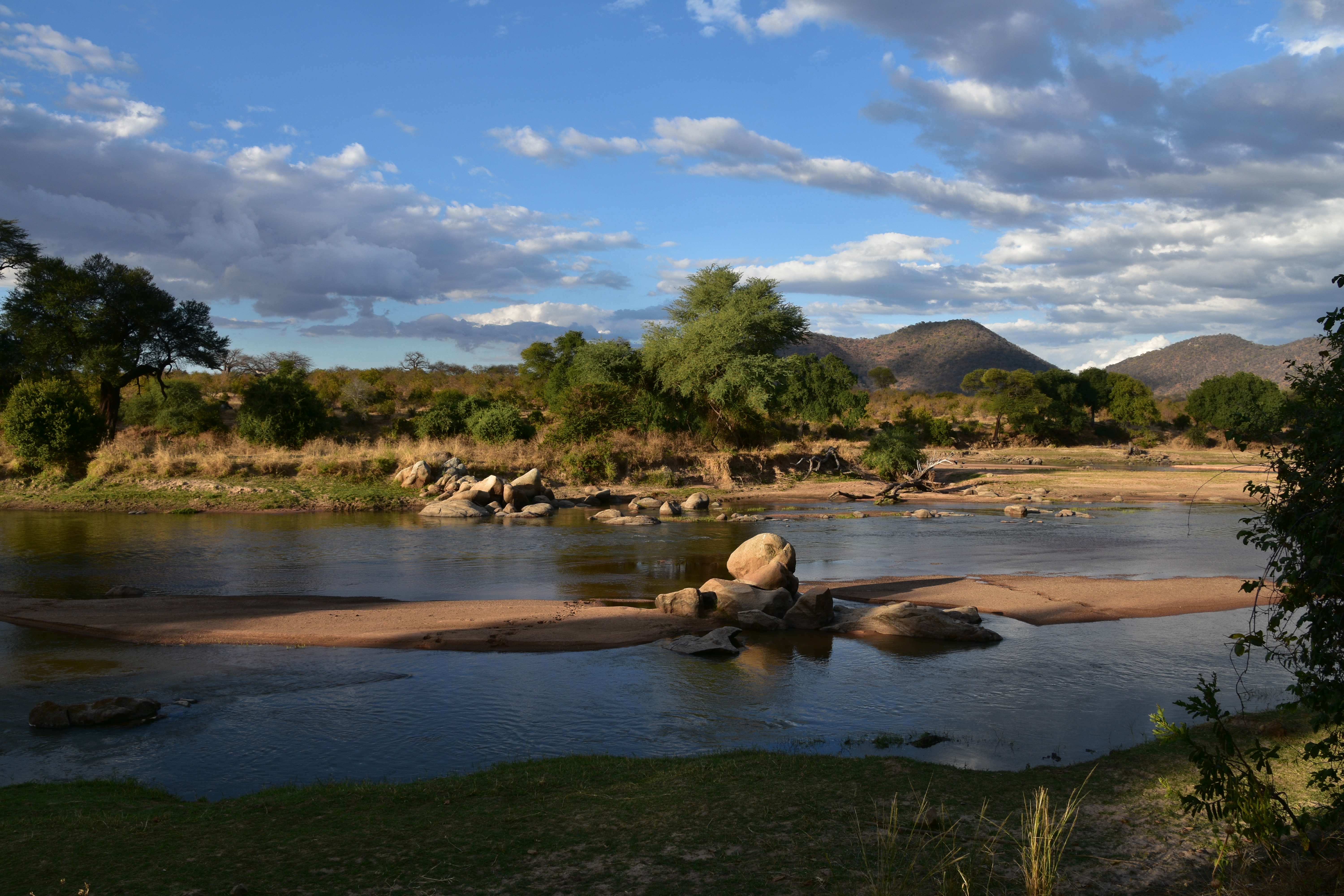
Please note that park fees in the Southern Circuit are generally higher compared to those in the Northern Circuit. Additionally, while in the North safari vehicles feature pop-up roofs for viewing, in the South, safaris often take place in open-sided vehicles, providing a closer connection to the natural surroundings.
Activities: Delve into a range of activities in the Southern Circuit. Enjoy the walking safaris, allowing you to intimately connect with nature and experience the wilderness on foot. Night game drives on the other hand offer an entirely different perspective. Obtaining permissions for these activities is comparatively easier in the Southern Circuit too.
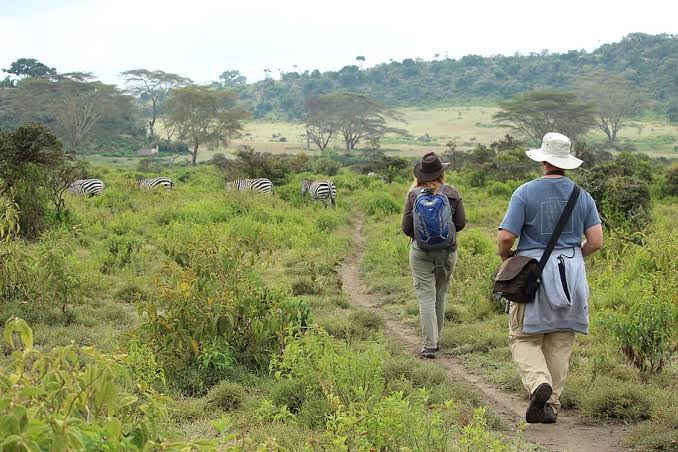
In Selous, enjoy a distinctive adventure with boat safaris, immersing yourself in the scenic beauty while enjoying game viewing from the water. For those seeking a more immersive experience, indulge in fly camping, adding a touch of adventure to your Southern Circuit exploration. With a plethora of activities catering to different preferences, the Southern Circuit promises a diverse and unforgettable safari adventure.
 Paying a day visit inside Nyumba Nitu natural forest in Njombe would be an exciting and memorable adventure worth reckoning.
Paying a day visit inside Nyumba Nitu natural forest in Njombe would be an exciting and memorable adventure worth reckoning.
The Nyumba Nitu natural forest is located in Mlevela village, some 15 kilometres from Njombe Township just after wattle estates which border the Nyumba Nitu village.
The forest has its root from Nyumba Nitu caves and had derived its name from the dark caves which have been associated with a myth of black cows which dwelt inside the caves.
Inside the caves, local Wabena people hid or took refugee during tribal wars between rival Wahehe fighters during Chief Mkwawa conquests in Iringa region, way back in last quarter of 19th century. The caves also provided safe hideout from German forces during the Maji Maji uprising.
Several tales and myths surround Nyumba Nitu forest, where wild hens are found living since time immemorial. The Wabena communities are the owners of the forest where they pay homage calls to conduct rituals and sacrifices to their unseen ancestors.
The natural caves could accommodate up to 100 people at a go, and have been a home of early people before houses or settlements were discovered.
You can visit Nyumba Nitu to enjoy its thrilling atmosphere and share experience with local communities neighboring the forest.
Mdandu historical site is part of Nyumba Nitu forest. It is an interesting area with a historical touch. Mdandu is the origin of the name Njombe which the region has been named, deriving its name from Mdzombe tree, only available in this area.
There is an old German court where locals were prosecuted and hanged at a nearby tree. Mdandu was also a stopping centre for slaves from Makete to Bagamoyo and is located along the old slave trade route.
 Paying a day visit inside Nyumba Nitu natural forest in Njombe would be an exciting and memorable adventure worth reckoning.
Paying a day visit inside Nyumba Nitu natural forest in Njombe would be an exciting and memorable adventure worth reckoning.
